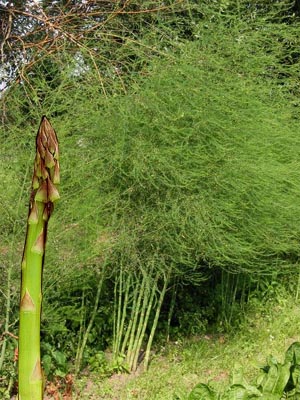


There aren't many perennial vegetable crops, vegetables you can plant once and harvest for many years to come. Looking forward to the first tender, pencil sized spears of asparagus poking through in the garden is a rite of spring. If you thought you didn’t like asparagus, you haven’t tried it freshly picked. Asparagus is one of the few perennial vegetable crops. The shoots are picked as young spears in the spring. Later in the season the foliage matures into an airy, fern-like cloud which changes to a golden color in the fall. Because asparagus takes up a permanent place in the garden, but can be an attractive plant, many people with space imitations use asparagus as a border or hedge plant.
You can grow asparagus either from seeds or from crowns. Asparagus crowns are really just the base and roots of a one-year old plants. Most people find it easier to grow from crowns, which are readily available in the spring. Unlike many plants, the roots on asparagus crowns can withstand some air exposure and you will usually find them for sale loose. They should still look firm and fresh, not withered or mushy.
No comments:
Post a Comment